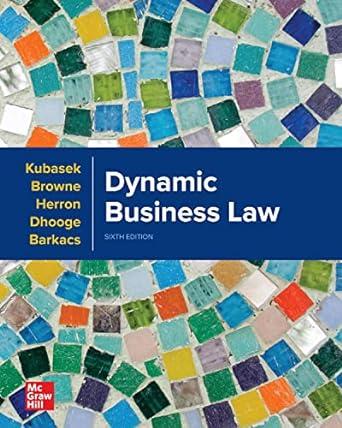Answered step by step
Verified Expert Solution
Question
1 Approved Answer
Lab 5 Conserved Variables 1 Purpose The purpose of this lab is to examine mechanical variables that may be conserved by looking at them




Lab 5 Conserved Variables 1 Purpose The purpose of this lab is to examine mechanical variables that may be conserved by looking at them before and after an interaction. Experiment 1 Use the short track and make sure that the track is as flat as possible so that the carts do not slide around by themselves when placed on it. We will use two carts. The first will be the initially moving cart. The second cart will be the initially stationary cart. Measure the mass of the first cart by itself. Measure the mass of the second cart with an extra 500 g on it. Tape the extra mass down if it will slide around. Orient the carts such that the velcro side of the first cart faces the velcro side of the second cart. Give the first cart a speed and have it collide and stick to the second cart with a final speed of around 0.2 m/s. Set the sampling rate for both carts to be at least 50 Hz) Measure the velocities of both carts just before and just after the interaction. Include signs. We will estimate the uncertainties of each value to be 1% percent of the measured value for the mass but 5% of the measured value for the velocity. In order to calculate the system totals as well as the momentum and the kinetic energy, we will have to propagate the uncertainties through those calculations using these formulas. (Aa)+(Bb)=(A+B)a+b (Aa)-(Bb)=(AB)a+b (Aa)x(B+b)=(AxB)(AxB) 2 b + B 2 (Aa) (B6)=(A+B)(4B) (+R Recall also that the t'-score is this. hology s al t' = Va +62 A-B 2 M page 1 before collision 274.2.7- mass after collision 274.12.7 774.5 7.7g Analysis 1 Use the following diagram to organize your information. We are looking at four variables: mass, velocity, momentum, and kinetic energy. The blue boxes are for the first, initially moving cart. means after the interaction. The system values pertain to both carts together and they are the sum of the blue box and the red box both before and after the interaction. The t'-score/agree or not value is the t'-score and whether the system values are the same or not before and after the interaction. Lastly, the conserved value is whether the thing being measured is conserved or not. 274.5 +500 774.5 7.7045.6104 besystem total t'-score conserved agree/not w eW agree Yes w 1048.6104 6 avid his broosa system but'-score conserved total agree/not before collision 0.7230-036 ised of a Quin -0.723 0.036 velocity not no after collision 0.18475 0.1845.002 H 0.368.018 priau anolistubis seor cosystem total t'-score conserved agree/not before collision 14817-7. 198175-7.4 momentum not after collision So.43 3.02 142.508 6.54 192.9 11.6 system total t'-score conserved agree/not before 71.6 -2.56 collision 0 +N) + (871.6 2.86 kinetic energy after collision 4.64.27 13.1.786 hot ho 17.141.06 The mass is a scalar. The velocity is a vector so signs are required. The momentum is a vector as well and it is calculated this way. p = mv The kinetic energy is a scalar and it can be calculated this way. 1 1 K ==mv = 2 2 Make sure you include the uncertainties in all of the boxes and calculations above so that you can ascertain the t'-score. Use a spreadsheet and save it for next week. page 2 Experiment 2 Use the same two carts as in experiment 1. Orient the carts such that the velcro side of the first cart faces the magnet side of the second cart. This way they will bounce off of each other. Give the first cart a speed and have it collide Measure the velocities of both carts just before and just after the interaction. Include signs. Estimate the uncertainties of each mass to be 1% percent of the measured but let it be 5% of the measured value for the velocity. Again, propagate the uncertainties using the above formula. Analysis 2 Organize your information using the following diagrams as before. The blue velocity arrow after the interaction is just a suggestion. t'-score conserved agree/not mass velocity momentum before collision after collision system total 274.12.7 774.5 7.74 1048.610.9 yes Yes 274.12.7 774.57.7g 1048.6 10.4 before collision 0.642/S after collision before collision after collision before collision kinetic energy after collision system total t'-score agree/not conserved 0 0.6421.03 hot -.162 "/s 0.291/5 .129,023 system total t'-score conserved agree/not system total t'-score conserved agree/not page 3 W Report & Conclusion Which variables are always conserved in these two interactions? Which variables are always not conserved in these two interactions? Are these interactions "collisions"? What makes these interactions collisions? What defines a collision? What kind of interactions is the first experiment? Be as specific as you can. Examine what are and what are not conserved. What kind of interactions is the second experiment? Be as specific as you can. Examine what are and what are not conserved. page 4
Step by Step Solution
There are 3 Steps involved in it
Step: 1

Get Instant Access to Expert-Tailored Solutions
See step-by-step solutions with expert insights and AI powered tools for academic success
Step: 2

Step: 3

Ace Your Homework with AI
Get the answers you need in no time with our AI-driven, step-by-step assistance
Get Started


